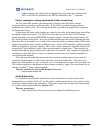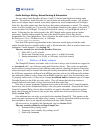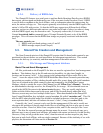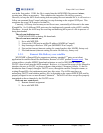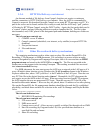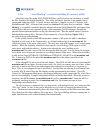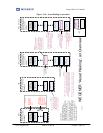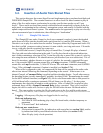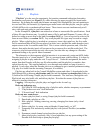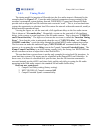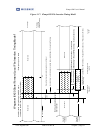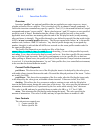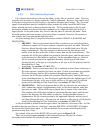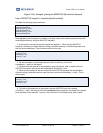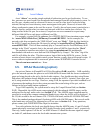
iPump 6420 User’s Manual
www.wegener.com 800070-01 Rev B Chapter 3, Page 79
3.4. Insertion of Audio from Stored Files
This section discusses the reason Store/Forward implementers have purchased and deployed
WEGENER iPump6420s. The essential function is to allow local file-based content to play in
place of the live audio stream, synchronized to overlay specific time epochs we call “spot
avails”. These avails are those time periods a default network commercial is playing in the live
audio track, as originating in the customer’s automation system, and usually co-located with the
uplink compression and control system. The avail becomes the opportunity to play out a locally-
relevant commercial spot in substitution, thus offering true “localization”.
3.4.1. Simple File inserts
The iPump6420 can, under Compel or local user command, seamlessly insert the decoded
audio from valid files into the decoded audio track from the live satellite PID streams. When a
Decoder is set to play live audio from the satellite Transport, defined by Program and Audio LD,
then that is called permanent setting, because it is non-volatile, surviving unit resets. File audio
inserts, with only special exceptions, are temporary.
The i6420 can execute 1) simple file plays of named files; 2) simple file plays of named
files, but with asset alias indirection in the path; 3) or file plays based on keyword indirection
into a folder containing a selection of files. It can also play one or more files as part of a playlist,
also using the same methods of file identification as just described (see next subsection). For all
these file insertions, whether discrete or as part of a playlist, the currently-supported file types
are 1) the recorded MPEG program stream files with mpg extensions, 2) MPEG elementary
stream files with mp2 extensions, 3) 16-bit PCM wave files with wav extensions, and 4) MPEG
I layer 3 files with mp3 extensions (if option is installed, see Section 3.7.4).
When a file is requested to play, its compressed file data will be passed to the audio codec
after a time interval following the command, depending on the source. If that source is in-
channel Compel, a Command Delay is applied and then decoding begins. For all other sources,
the decoding begins virtually immediately, probably less than 50 mS. Remembering the model
for the i6420 internal functions (see Figure 1-3), the decoded linear audio data is then passed to
a 500 mS deep buffer, creating an automatic 500 mS latency on file plays.* So the system
implementer must keep this in mind to avoid confusion: After a Compel file (or playlist) play
command, there will be a Compel Command Delay before execution. Then, after execution
begins, the old live audio will continue to play for 500 mS before the new file-based audio is
heard. The same applies on exiting the file play and return to the live satellite audio stream.
* For purposes of this discussion, it makes no difference whether the file audio is actually compressed-audio data or linear PCM wave-file
data.
Logging: All temporary file plays are logged to the As-run Log.
Relevant indicators are:
1. PLAYBACK LED on during play of any file-based audio, whether temporary or
permanent
2. “File-not-found” fault indication
Relevant user controls are:
1. File insertion by named file, by indirection with asset alias (see section 3.4.6), and/or
by indirection with keyword-based selection from folder (see section 3.4.5)
2. Abort file play (only a local operation)



